Wood composites have emerged as a promising alternative to traditional solid wood in various applications due to their enhanced properties and sustainable nature. This article explores the innovations in engineered wood production, focusing on the development of wood composites that offer improved strength, durability, and versatility. By examining a hypothetical case study involving the construction industry, we will delve into the potential benefits of utilizing these innovative materials.
In recent years, there has been an increasing demand for wood-based products that can meet the growing requirements of modern industries while minimizing environmental impact. Wood composites present a viable solution by combining natural fibers with synthetic resins or binders to produce materials with tailored characteristics suitable for specific applications. One notable example is the use of high-performance wood composites in structural components for building construction. These composites exhibit superior mechanical properties compared to conventional lumber, including higher strength-to-weight ratios and increased resistance against moisture, pests, and decay. Such advancements not only address sustainability concerns but also enable architects and engineers to design more efficient and durable structures.
Advantages of Wood Composites
Wood composites, also known as engineered wood or composite wood, have gained significant attention in recent years due to their numerous advantages over traditional solid wood. These materials are produced by combining wood fibers with adhesives and other additives to create a product that offers enhanced performance characteristics. One notable example is the use of wood composites in the construction industry, where they have revolutionized the way buildings are designed and built.
One key advantage of wood composites is their superior strength and durability compared to solid wood. By incorporating resin-based adhesives into the manufacturing process, these materials exhibit excellent load-bearing capabilities and resistance to warping or splitting. This increased strength allows for greater design flexibility, enabling architects and engineers to construct structures that were previously unattainable using conventional building materials.
Moreover, the production of wood composites promotes sustainability by utilizing smaller diameter trees or even waste wood from other industries. Unlike solid timber which requires large sections of mature trees, composite products can be made from smaller pieces sourced sustainably from managed forests. This not only reduces deforestation but also minimizes waste generation by repurposing leftover lumber from various woodworking operations.
In addition to their structural benefits and eco-friendly nature, another advantage of wood composites lies in their improved dimensional stability. Traditional solid woods tend to expand or contract depending on environmental conditions such as humidity and temperature changes. In contrast, engineered woods demonstrate minimal movement due to their composition and manufacturing process. This characteristic makes them highly suitable for applications where precise dimensions are crucial, such as flooring installations or furniture production.
To illustrate the emotional impact of these advantages:
- Enhanced Strength: Imagine living in a home constructed with innovative wood composite beams capable of sustaining heavy loads without compromising safety.
- Sustainable Sourcing: Consider how sustainable sourcing practices contribute towards protecting our environment while still meeting societal needs.
- Reduced Waste Generation: Reflect on how reusing leftover lumber could help reduce landfill waste and promote a circular economy.
- Dimensional Stability: Envision the frustration of dealing with warped or cracked wooden floors, and contrast it with the peace of mind provided by stable wood composite flooring.
The advantages discussed above highlight how wood composites have become a viable alternative to traditional solid wood in various industries. In the following section, we will explore different types of wood composites, further showcasing their versatility and potential applications.
Types of Wood Composites
Advantages of Wood Composites in the previous section highlighted the various benefits these materials offer. In this section, we will delve into the different types of wood composites available and explore their unique characteristics.
One example of a wood composite is medium-density fiberboard (MDF). MDF is made by breaking down hardwood or softwood residuals into fibers, combining them with wax and resin binders, and forming panels under high temperature and pressure. This versatile material has gained popularity due to its uniform density, smooth surface finish, and excellent machining properties.
Wood composites can be broadly categorized into three main types:
-
Particleboard: This type of wood composite is produced by compressing small wood particles together using adhesive resins. It offers good dimensional stability, cost-effectiveness, and resistance to moisture. However, it may lack strength compared to other types.
-
Plywood: Plywood consists of multiple layers of thin veneer sheets bonded together with strong adhesives. This results in a strong and durable material that exhibits enhanced structural integrity and resistance to warping or splitting. Plywood finds extensive use in construction applications.
-
Oriented Strand Board (OSB): OSB is manufactured from large wood strands oriented strategically for added strength and stiffness. The strands are combined with waterproof adhesives under high pressure to create rigid panels suitable for flooring, roof decking, and sheathing purposes.
These wood composites have revolutionized the industry by providing numerous advantages over solid wood products alone—greater affordability, increased durability, improved performance characteristics such as moisture resistance or dimensional stability—and reducing waste through efficient utilization of raw materials.
To provide a visual representation of these advantages, let’s consider the following table:
| Advantages | |
|---|---|
| Cost-effective | :heavy_check_mark: |
| Enhanced durability | :heavy_check_mark: |
| Improved moisture resistance | :heavy_check_mark: |
| Reduced environmental impact | :heavy_check_mark: |
In summary, wood composites offer a diverse range of advantages and can be classified into particleboard, plywood, and oriented strand board. These materials have found widespread use in various industries due to their cost-effectiveness, durability, and improved performance characteristics.
Innovative Manufacturing Techniques
Having explored the various types of wood composites, we now turn our attention towards the innovative manufacturing techniques that have revolutionized engineered wood production.
To further enhance the quality and versatility of engineered wood, manufacturers have developed a range of innovative techniques. One such example is the use of resin impregnation to improve dimensional stability and durability in plywood production. By saturating the veneer layers with resin prior to pressing, this technique minimizes moisture absorption and reduces warping, resulting in stronger and more reliable products.
In addition to resin impregnation, another noteworthy innovation is the incorporation of nanotechnology into composite materials. Nanoparticles can be added during the manufacturing process to enhance properties such as strength, fire resistance, and water repellency. For instance, researchers have successfully integrated carbon nanotubes into medium-density fiberboard (MDF), significantly improving its mechanical performance while maintaining cost-effectiveness.
The pursuit of sustainability has also led to notable advancements in engineered wood production. Many manufacturers now prioritize utilizing recycled or reclaimed materials for their composites. This approach not only helps reduce waste but also lowers overall environmental impact. Moreover, some companies are exploring bio-based adhesives derived from renewable sources like soybeans or lignin, making strides towards greener alternatives without compromising product quality.
These innovative manufacturing techniques have paved the way for a new era in engineered wood production. To better understand their impact on various aspects of performance and application possibilities, let us explore some emotional responses evoked by these advancements:
- Excitement: The integration of nanotechnology opens up endless opportunities for creating high-performance composite materials.
- Confidence: Resin impregnation ensures long-lasting durability and reliability in plywood products.
- Responsibility: Utilizing recycled or reclaimed materials demonstrates a commitment to sustainable practices.
- Inspiration: Exploring bio-based adhesives encourages creativity in finding eco-friendly solutions.
| Technique | Advantages | Applications |
|---|---|---|
| Resin impregnation | Improved dimensional stability and durability | Plywood, flooring, furniture |
| Nanotechnology | Enhanced strength, fire resistance, water repellency | MDF, particle board, structural components |
| Utilization of recycled or reclaimed materials | Reduced waste and lower environmental impact | Decking, packaging materials, interiors |
| Bio-based adhesives | Sustainable alternative to conventional adhesives | Cabinets, doors, veneers |
By embracing these innovative manufacturing techniques in engineered wood production, we can unlock the full potential of this versatile material.
Turning our attention towards the diverse applications of engineered wood…
Applications of Engineered Wood
In the previous section, we explored innovative manufacturing techniques used in the production of wood composites. Now, let us delve into the various applications of engineered wood and how it has revolutionized multiple industries.
One example that highlights the versatility of wood composites is its use in the construction industry. Imagine a sustainable housing project where engineers are tasked with constructing affordable yet durable homes. By utilizing engineered wood products such as laminated veneer lumber (LVL) or oriented strand board (OSB), these houses can be built quickly and efficiently while still maintaining structural integrity. This cost-effective solution not only meets strict building codes but also reduces environmental impact by promoting responsible forestry practices.
The applications of engineered wood extend beyond construction, finding their way into furniture manufacturing as well. With advancements in technology, manufacturers now have access to high-quality composite materials that mimic the appearance and performance of solid wood at a fraction of the cost. From elegant dining tables to stylish cabinets, these composite products offer an aesthetically pleasing alternative without compromising on durability or functionality.
To further illustrate the benefits of incorporating engineered wood into everyday life, consider the following emotional responses:
- Environmental Consciousness: Using responsibly sourced raw materials for wood composites helps protect forests and preserve biodiversity.
- Economic Advantages: Engineered wood provides cost-effective solutions for various industries, making quality products more accessible to consumers.
- Durability and Longevity: The strength and stability of engineered wood enable longer-lasting products that withstand wear and tear over time.
- Design Flexibility: Engineered wood offers endless possibilities in terms of shape, color, texture, and finish options, allowing for greater creativity in design projects.
| Emotion | Example |
|---|---|
| Excitement | Experience the thrill of creating stunning interiors using eco-friendly engineered wood panels! |
| Confidence | Invest in long-lasting furniture made from durable composite materials with exceptional performance. |
| Satisfaction | Enjoy peace-of-mind knowing that your purchase supports responsible forestry practices and environmental sustainability. |
| Affordability | Discover affordable alternatives to solid wood products without compromising on quality or style. |
As we have seen, the applications of engineered wood are vast and offer numerous advantages across various industries. By understanding both the benefits and potential drawbacks, we can make informed decisions regarding their use in different contexts.
Environmental Impact of Wood Composites
Building upon the diverse applications of engineered wood, it is essential to consider the environmental impact associated with its production. By examining the life cycle analysis and sustainability aspects, we can gain a comprehensive understanding of how wood composites contribute to our environment.
To illustrate the potential environmental benefits of wood composites, let us consider a hypothetical case study. Imagine a construction project that requires beams for structural support. Traditionally, solid timber beams would be used, leading to deforestation and increased carbon emissions due to logging and transportation. However, by utilizing wood composites such as laminated veneer lumber (LVL) or glue-laminated timber (glulam), this project could significantly reduce its ecological footprint. These engineered products combine smaller pieces of sustainably sourced wood bonded together with adhesives, resulting in stronger and more durable beams while conserving natural resources.
The environmental advantages offered by wood composites extend beyond individual projects. Here are some key points highlighting their positive impact:
- Reduced deforestation: The use of smaller pieces of wood allows for efficient utilization of timber resources without relying on large sections from old-growth trees.
- Lower greenhouse gas emissions: Engineered wood production emits fewer carbon emissions compared to traditional methods involving cutting down mature trees.
- Energy efficiency: Manufacturing processes involved in producing wood composites require less energy than those needed for steel or concrete alternatives.
- Waste reduction: Utilizing small-diameter logs and offcuts from sawmills reduces waste generation and promotes sustainable forest management practices.
Table 1: Environmental Benefits of Wood Composites
| Traditional Timber | Wood Composites | |
|---|---|---|
| Deforestation | High | Reduced |
| Greenhouse Gas Emissions | Higher | Lower |
| Energy Consumption | Moderate | Less |
| Waste Generation | Significant | Reduced |
By considering the environmental benefits outlined above, it becomes evident that wood composites are a sustainable alternative to traditional timber. As we embrace the need for eco-friendly construction materials, further advancements in wood composite technology can pave the way for a greener future.
Understanding the importance of mitigating environmental impact is crucial for shaping future trends in wood composite technology. Let us now explore some potential developments and innovations on the horizon.
Future Trends in Wood Composite Technology
Wood composites have come a long way since their inception, and continuous advancements in technology have paved the way for innovative production methods. One notable example is the development of cross-laminated timber (CLT), which has revolutionized the construction industry. CLT consists of multiple layers of wood boards that are stacked perpendicular to each other and bonded together with adhesives. This engineered wood product offers numerous benefits, such as enhanced strength, dimensional stability, and fire resistance.
To further illustrate the innovations in engineered wood production, consider the following key developments:
-
Advanced Adhesive Technologies: Traditional wood composites relied on traditional adhesive systems like urea-formaldehyde resins, which posed health risks due to formaldehyde emissions. However, modern research focuses on developing environmentally friendly adhesives with reduced or no formaldehyde content. These new adhesive technologies not only ensure safer indoor environments but also contribute to sustainable manufacturing practices.
-
Digital Fabrication Techniques: With the advent of computer-aided design (CAD) software and automated machinery, manufacturers can now precisely cut and shape wooden components for various applications. CNC routers allow intricate designs to be carved out from large panels with minimal wastage, maximizing resource efficiency. This level of precision promotes customization options while reducing material waste during production.
-
Incorporation of Recycled Materials: In an effort to promote sustainability and reduce waste generation, researchers explore incorporating recycled materials into wood composite production processes. By utilizing by-products from other industries or post-consumer waste streams such as plastics or fibers, it becomes possible to create eco-friendly products without compromising performance characteristics.
-
Integration of Nanotechnology: Harnessing nanotechnology enables engineers to improve the properties of wood composites significantly. By introducing nanoparticles into the matrix material, researchers enhance mechanical strength, durability against moisture and UV radiation damage, and even introduce self-healing capabilities. These advancements open up new possibilities for the application of wood composites in various industries.
Embracing these innovative approaches to engineered wood production not only presents economic advantages but also offers environmental benefits, such as reduced carbon footprint and enhanced resource efficiency. As technology continues to advance, it is crucial for researchers, manufacturers, and policymakers to collaborate and further explore sustainable solutions that push the boundaries of conventional wood composite manufacturing methods. By doing so, we can unlock a future where materials are both high-performing and eco-friendly.

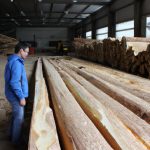
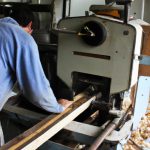
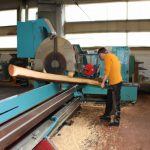


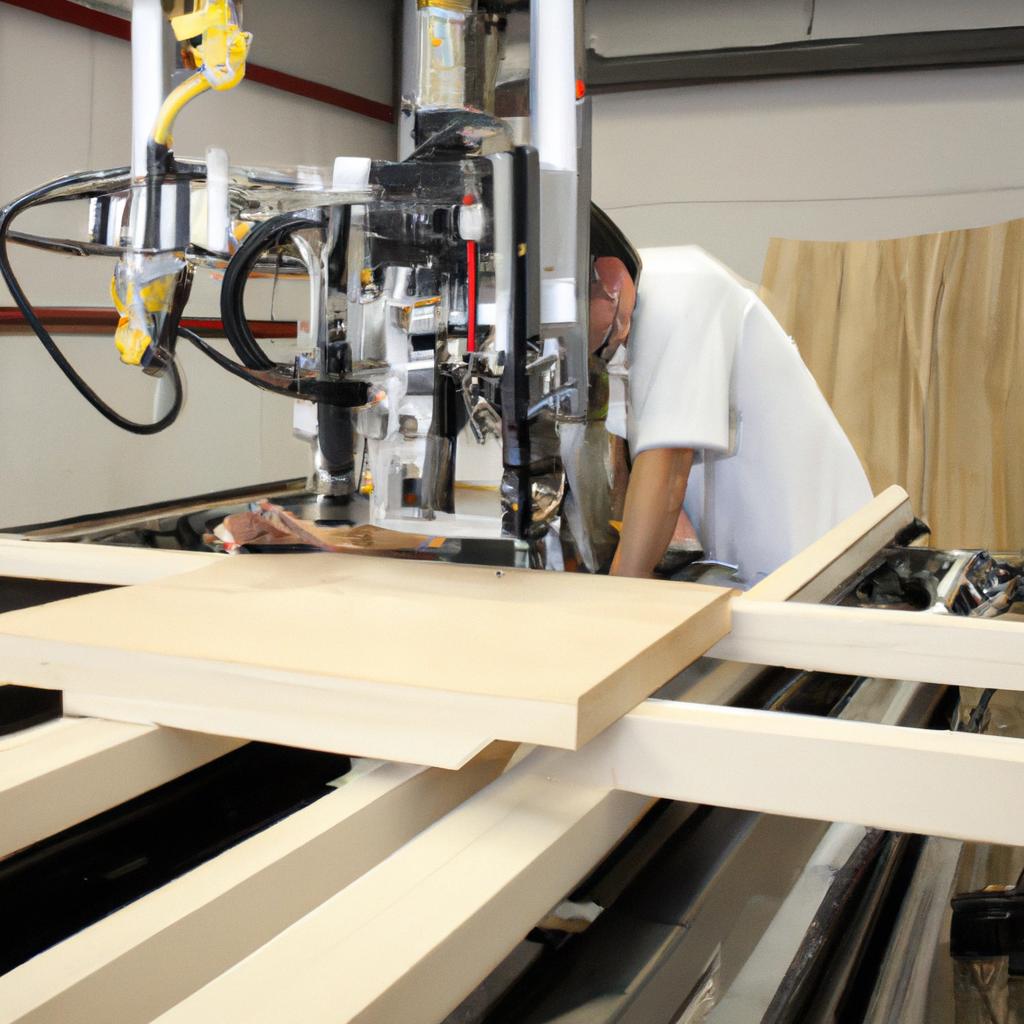
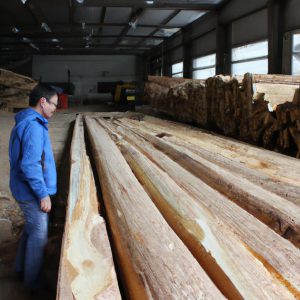
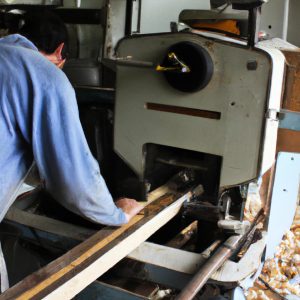
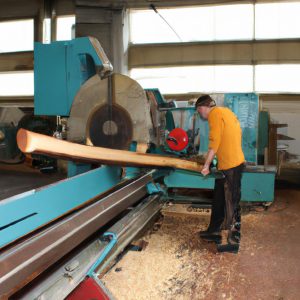
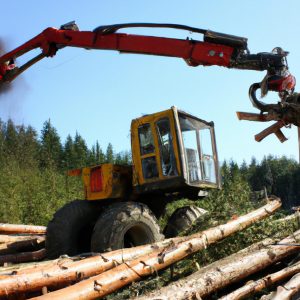
More Stories
Wood Moisture Content Control: A Key Element in Wood Production: Wood Engineering
Timber Framing: Wood Production and Engineering
Wood Engineering: Optimizing Wood Production Efficiency